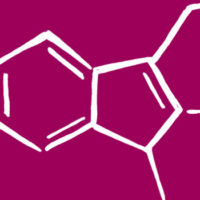Verification Strategies for the Food Allergen Labeling Law

The Food Allergen Labeling and Consumer Protection Act of 2004 (FALCPA), which goes into effect Jan. 1, 2006, makes it clear that the U.S. Food and Drug Administration (FDA) wants the food industry to protect food-allergic consumers with clearly understandable food labels. If there is any potential that a product contains allergenic proteins, labeling must be considered, whether with a precautionary statement (i.e., “may contain…”) or an actual declaration in the ingredient list.
For those in the food industry with known allergenic ingredients in their products, the law will simply mean changing their ingredient labels from less well-known terms, such as “semolina,” to more consumer-friendly terms such as “wheat.” For others, the new law will require a comprehensive investigative survey of all their products’ ingredients, including minor ingredients (flavors, colorings, additives) and processing aids. FALCPA has a formal exemption process where, with scientific proof that it does not contain allergenic protein, an ingredient may be exempt from labeling. Though precautionary labeling is still allowed, FALCPA will make food companies utilizing this labeling provide detailed justification, and it may make them more susceptible to investigation.
The new law also requires food manufacturers to have processes in place that reduce or eliminate accidental cross-contact between non-allergenic foods and known food allergens, such as peanuts, egg, milk, soy, almonds, and wheat. To add teeth to the law, FDA is required to conduct facility inspections within 18 months of the effective date.
Allergen Testing for Food Safety Validation
To prove compliance with FALCPA, allergen testing will determine if a product requires labeling, suggests Tim Hendra, product manager with Neogen Corp., a leading global food safety solutions provider (www.neogen.com). “When it does, allergen testing can provide an investigative tool to determine the allergen’s source,” he says. “Tests are available to evaluate nearly every possible source in a facility, from the finished product and ingredients, to every piece of equipment and surface with which the product comes in contact throughout processing.”
Allergen testing can be included as a sanitation validation in the food safety program, or as part of a sanitation standard operating procedure (SSOP) when changing over from an allergen-containing product, Hendra notes. Environmental swabbing is an important method of demonstrating that cross-contact between foods intended to be allergen-free and known allergens has been reduced or eliminated within a system. Swabs can assess equipment surfaces prior to cleaning production lines and again after cleaning to determine whether there is a level of allergen residue present and if recleaning is necessary.
Allergen presence on equipment can further be assessed by sending non-allergen product through the equipment, then testing a representative number of samples throughout the first lot of product for the presence of allergens. If the testing shows that the SSOP is adequate, then precautionary labeling may not be necessary. All product testing positive for allergenic protein should be put on hold for relabeling or discarded.
Allergen monitoring, using screening or quantitative testing kits, adds validation to an allergen control program, he says which may include:
• Requiring suppliers to provide information on their allergen prevention programs.
• Requiring that all incoming ingredients conform to specifications for allergen control programs.
• Educating all personnel about food allergen concerns.
• Establishing product identification, traceability and recall procedures for all products.
• Following Good Manufacturing Practices (GMPs), including equipment designed for easy cleanup and sanitation and control of receiving, storage and distribution points.
• Identifying all allergen sources.
• Avoiding cross-contact with shared equipment.
Hendra says a typical allergen testing program might look something like this: Company A, a bakery manufacturer, produces three flavors of cookies in the same facility: vanilla, sugar, and peanut butter. As part of its allergen control plan, Company A asks its supplier to certify that non-peanut ingredients are peanut-free. To further minimize the risk of peanut contamination, Company A uses the following approach:
1. Testing raw material: Every fifth load of incoming raw material is tested for peanut allergen with a screening test, and delivery is not accepted until a negative result is received. In the event of a positive sample, the delivery is rejected.
2. Testing of food contact surfaces: After the peanut butter crunch cookies are run, the processing equipment is cleaned. After cleanup, but prior to the next production run, each piece of equipment is swabbed for peanut residue. In the event of a positive result, the line is recleaned and retested.
3. Quantitative testing: In instances where a quantitative level of peanut is needed to determine the level of the ingredient in a final product, a quantitative test kit is used.
www.neogen.com
Looking for a reprint of this article?
From high-res PDFs to custom plaques, order your copy today!








